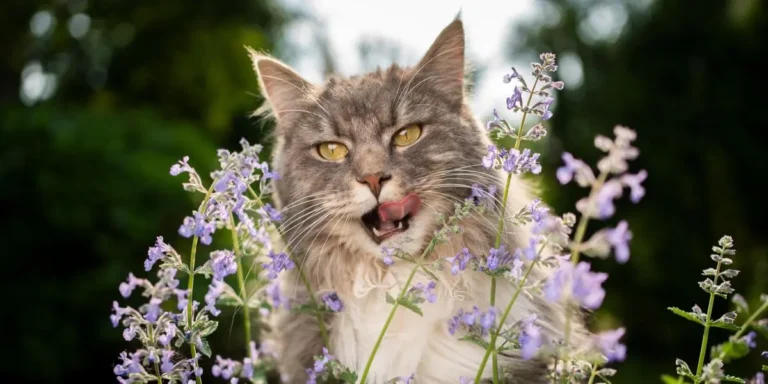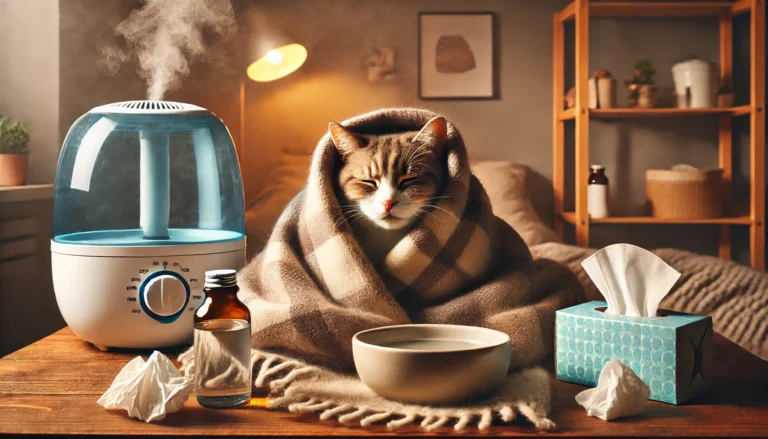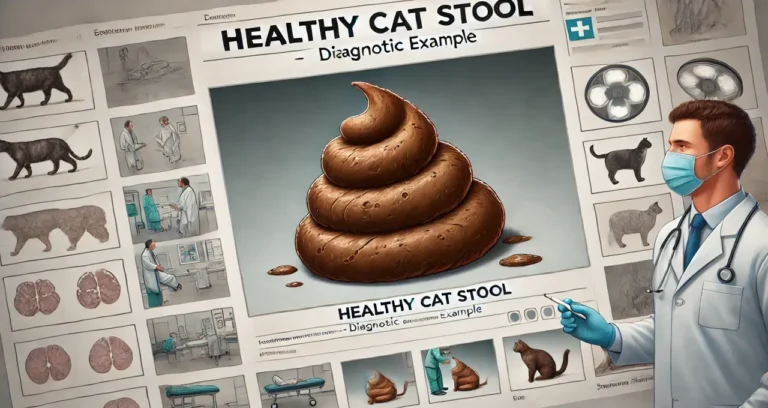Runny Nose in Cats-why is my dogs nose so dry and crusty?

Runny Nose in Cats, or rhinorrhea, is a common condition that can be caused by several underlying issues. While it might seem like a minor problem, it can sometimes indicate more serious health concerns. This comprehensive article explores the causes, symptoms, diagnosis, and treatment options for a runny nose in cats, as well as tips for preventing and managing the condition.
Understanding the Cat’s Respiratory System
To properly understand a runny nose in cats, it’s essential to first understand the basic anatomy and function of the cat’s respiratory system. The nose plays a crucial role in filtering, warming, and humidifying the air that cats breathe. Like humans, cats rely on their nasal passages to detect smells, which is why nasal issues can sometimes interfere with their quality of life.
The Anatomy of a Cat’s Nose
A cat’s nose is much more than just a sensory organ—it’s responsible for:
- Olfaction (Sense of Smell): Cats have an extraordinarily sensitive sense of smell, which they use for communication and hunting.
- Air Filtration: Their nose helps filter out harmful particles before the air enters their lungs.
- Humidification and Temperature Regulation: Cats rely on their noses to help regulate the temperature and humidity of the air they breathe.
When the nose becomes congested or inflamed, it can significantly impact a cat’s ability to breathe, eat, and drink, potentially leading to other health complications.
Common Causes of Runny Nose in Cats
A runny nose in cats is a symptom of many potential underlying health conditions. The most common causes include:
1. Upper Respiratory Infections (URIs)
Upper respiratory infections, or URIs, are among the most common causes of a runny nose in cats. These infections are typically viral or bacterial and can cause inflammation in the nose and sinuses.
- Feline Herpesvirus (FHV-1): This virus is a leading cause of URIs in cats and often results in a clear nasal discharge. It is highly contagious and can cause chronic symptoms in some cats.
- Feline Calicivirus (FCV): Another common virus that can lead to a runny nose. This virus often causes symptoms like sneezing, fever, and mouth ulcers in addition to nasal discharge.
- Bacterial Infections: Secondary bacterial infections can occur after a viral infection weakens the immune system. Common bacteria like Pasteurella or Streptococcus can exacerbate symptoms.

2. Allergies
Just like humans, cats can develop allergies to various environmental factors, including pollen, dust mites, and mold. Allergic rhinitis is a condition that occurs when the immune system overreacts to allergens, leading to nasal inflammation and discharge.
- Seasonal Allergies: Cats can experience flare-ups during specific seasons when allergens like pollen are abundant.
- Environmental Triggers: Household allergens like cigarette smoke, strong cleaning chemicals, or perfumes can also cause nasal congestion.
3. Dental Issues
While dental problems may seem unrelated to a runny nose, the upper teeth in cats are located close to the sinuses. Infected teeth, especially those in the upper jaw, can lead to sinusitis (inflammation of the sinuses), which can result in nasal discharge.
- Tooth Abscesses: An infected tooth or gum disease can cause pus to drain into the sinuses, resulting in a runny nose.
- Periodontal Disease: Chronic dental disease can cause significant inflammation that may extend to the nasal passages.
4. Foreign Bodies
Sometimes, foreign objects like grass, dust, or small particles can become lodged in a cat’s nasal passages, leading to irritation and a runny nose. This typically causes one-sided nasal discharge and may also lead to sneezing or pawing at the nose.
5. Nasal Polyps or Tumors
Nasal polyps or tumors, although less common, can cause chronic nasal discharge. These growths can obstruct the nasal passages, leading to difficulty breathing and a persistent runny nose.
- Polyps: Benign growths that may cause nasal congestion, discharge, or even bleeding.
- Nasal Tumors: Malignant growths can lead to more severe symptoms, including nasal discharge, pain, and loss of appetite.
Symptoms of a Runny Nose in Cats
A runny nose in cats is often accompanied by other symptoms that help narrow down the cause of the condition. While a runny nose itself can be a minor issue, it’s essential to monitor the accompanying symptoms for further complications.
1. Sneezing
Sneezing is commonly seen with a runny nose, especially if the cause is an upper respiratory infection or environmental irritant. Frequent sneezing can indicate irritation in the nasal passages.
2. Coughing
Coughing may occur if the nasal congestion leads to post-nasal drip, where mucus drips into the back of the throat. It could also indicate an infection that has spread to the lungs.
3. Decreased Appetite
When a cat’s nose is congested, they may lose their sense of smell, which can significantly impact their appetite. A lack of appetite can lead to weight loss and dehydration, which are concerning symptoms if prolonged.
4. Lethargy
Cats with a runny nose may appear more tired or lethargic than usual, especially if they are fighting an infection or dealing with discomfort. This symptom is often seen in combination with other signs of illness.
5. Discolored Nasal Discharge
Nasal discharge that is clear may indicate a viral infection, while yellow or green discharge may suggest a bacterial infection. Bloody nasal discharge can be a sign of more severe conditions like tumors, polyps, or dental issues.
Diagnosis of a Runny Nose in Cats
If your cat has a persistent or severe runny nose, it’s essential to seek veterinary attention for a proper diagnosis. A veterinarian will typically begin by gathering a detailed history and performing a physical examination to assess the symptoms.
1. Physical Examination
The veterinarian will examine your cat’s nose and mouth to check for signs of inflammation, infection, or foreign bodies. They will also assess other areas of the body to check for signs of a systemic issue.
2. Diagnostic Testing
- Blood Tests: These can help identify infections, viral diseases, or immune system abnormalities that may be contributing to the condition.
- Nasal Swabs or Cultures: A sample of the nasal discharge may be taken to identify any bacterial or viral infections.
- X-Rays or CT Scans: Imaging tests can help identify structural problems such as polyps, tumors, or dental issues that may be causing the runny nose.
Treatment Options for a Runny Nose in Cats
Treatment for a runny nose in cats depends on the underlying cause. While some causes of a runny nose may resolve on their own with minimal intervention, others may require more intensive care.
1. Antibiotics
If a bacterial infection is diagnosed, the veterinarian will prescribe antibiotics. Common antibiotics for treating nasal infections in cats include amoxicillin-clavulanate or clindamycin. These medications will help eliminate the bacteria causing the infection.
2. Antiviral Medications
For viral infections like feline herpesvirus or calicivirus, antiviral medications such as famciclovir may be prescribed to reduce the severity and duration of symptoms. However, supportive care (such as hydration and nutrition) is often required for viral infections, as antibiotics won’t be effective.
3. Decongestants and Nasal Sprays
In some cases, a veterinarian may recommend decongestants or saline nasal sprays to help clear the nasal passages and reduce inflammation. It’s important to use these products under veterinary supervision, as some human nasal sprays can be harmful to cats.
4. Dental Treatments
If dental disease is causing the runny nose, dental cleanings, tooth extractions, or other dental procedures may be necessary to resolve the issue. This treatment is particularly relevant for cats with abscessed teeth or periodontal disease.
5. Surgery
In cases of polyps or tumors, surgery may be required to remove the growths causing the nasal discharge. After surgery, additional treatments like antibiotics or anti-inflammatory medications may be required.
do you know
homes and gardens, but can they pose a risk to cats? In this article, we’ll dive deep into the world of roses and cats, exploring whether roses are safe for cats and what precautions should be taken.
Prevention and Care
While some causes of a runny nose in cats are unavoidable, there are steps you can take to help prevent the condition or reduce its severity.
1. Regular Veterinary Check-Ups
Regular veterinary visits can help identify potential problems early, such as dental disease, viral infections, or allergies, before they lead to a runny nose.
2. Good Oral Hygiene
Maintaining your cat’s oral health through regular brushing, dental cleanings, and using dental chews can help prevent dental disease and reduce the risk of stomatitis and sinus infections.
3. Allergy Management
If allergies are suspected, working with your veterinarian to identify and eliminate allergens can help reduce the incidence of a runny nose. This may involve dietary changes or avoiding environmental allergens.
4. Keeping the Environment Clean
Reducing allergens like dust, mold, and pollen in your home can help minimize the risk of respiratory issues. Using air purifiers and regularly cleaning bedding and litter boxes can create a cleaner, healthier environment.
Conclusion
A runny nose in cats can be a symptom of several conditions, ranging from mild allergies to serious infections or tumors. By recognizing the symptoms early, seeking proper veterinary care, and following the appropriate treatment plan, you can help your cat recover and improve their quality of life. Always consult your veterinarian for a definitive diagnosis and tailored treatment plan to ensure the best outcome for your cat.
How do I help my cat with a runny nose?
If your cat has a runny nose in cats, there are several ways you can help alleviate their symptoms at home. First, ensure your cat remains hydrated by offering fresh water regularly, as dehydration can worsen nasal congestion. Use a humidifier or steam in the bathroom to help soothe irritated nasal passages and make breathing easier. Gently wipe away any discharge with a soft tissue or cloth, being careful not to irritate the skin around their nose. Additionally, providing soft food may make eating easier if their sense of smell is diminished. However, if the runny nose persists or worsens, it’s crucial to consult with your vet to determine the cause and get the appropriate treatment.
Should I be worried if my cat’s nose is dripping?
A runny nose in cats can be concerning, especially if it’s accompanied by other symptoms like lethargy, loss of appetite, or coughing. While a mild nasal discharge may be due to environmental factors like dust or mild irritation, it can also indicate underlying health issues such as upper respiratory infections, dental disease, or even allergies. If your cat’s nose continues to drip for more than a few days, becomes discolored (yellow or green), or if you notice other concerning symptoms, you should consult your veterinarian. In such cases, timely diagnosis and treatment are essential to avoid complications, particularly if the runny nose is related to infections or more serious conditions.
How do you treat nasal drip in cats?
Treating a runny nose in cats involves identifying the underlying cause. If the nasal drip is due to a bacterial or viral infection, your vet may prescribe antibiotics or antiviral medications. Decongestants or saline nasal sprays can help clear mucus and ease breathing. In more severe cases, especially if the drip is caused by dental disease or sinus issues, your cat may require dental procedures or surgery to resolve the problem. Providing a warm, humid environment can also help relieve congestion. Always consult with your veterinarian before administering any over-the-counter medications, as some human treatments can be harmful to cats. Regular veterinary visits will help ensure proper care and treatment.
When should I take my cat to the vet for a runny nose?
If your cat develops a runny nose in cats, it’s important to monitor the situation closely. You should take your cat to the vet if the nasal discharge persists for more than a couple of days, becomes yellow or green, or if your cat experiences other symptoms such as coughing, wheezing, or a decreased appetite. Additionally, if your cat is excessively pawing at their nose, seems lethargic, or has difficulty breathing, it’s a good idea to get them evaluated by a veterinarian. Prolonged or worsening symptoms could indicate an upper respiratory infection, dental disease, or other underlying health issues that require professional attention.
How do I clear my cat’s nose?
To help clear a runny nose in cats, you can start by gently wiping away any nasal discharge with a soft, damp cloth. You can also use a saline solution (specifically made for pets) to moisten the mucus and clear the nasal passages. Using a humidifier in the room or running a hot shower to create steam may also provide relief, making it easier for your cat to breathe. However, if the congestion continues, or if there’s an associated fever, lethargy, or other concerning symptoms, it’s important to consult your vet for further treatment. The underlying cause will determine the most appropriate treatment for clearing your cat’s nose.
What are cat allergy symptoms?
Common symptoms of cat allergies in cats include sneezing, a runny nose, watery eyes, coughing, and difficulty breathing. Cats may also exhibit skin irritation, including itching, redness, or hair loss due to an allergic reaction. In more severe cases, allergies can lead to respiratory distress, wheezing, or asthma-like symptoms. Cats with allergies might also lick or chew excessively at their paws and face. If you suspect your cat is suffering from allergies, it’s important to consult your veterinarian to confirm the cause and explore appropriate treatments such as antihistamines or allergy shots. Managing allergens in the cat’s environment can also help alleviate symptoms.
Do cat colds go away on their own?
Most mild cases of runny nose in cats, often referred to as a “cat cold,” may resolve on their own within 7-10 days, particularly if the underlying cause is viral, like a feline respiratory virus. However, the symptoms—such as nasal discharge, sneezing, and mild lethargy—can be uncomfortable for your cat, and it’s important to monitor them closely. In some cases, a viral cold can develop into a bacterial infection, requiring antibiotics. If your cat’s symptoms persist or worsen, or if new symptoms develop, you should seek veterinary care to ensure that no secondary infections or more serious health issues are present.
Can I put Vicks on my cat’s nose?
No, you should never put Vicks or any mentholated products on your cat’s nose. While these products can provide temporary relief for humans, they are not safe for cats. Runny nose in cats should not be treated with human medications, as certain ingredients, such as eucalyptus or menthol, can be toxic to cats when ingested or absorbed through the skin. If your cat has nasal congestion or a runny nose, it’s better to use pet-safe solutions recommended by your veterinarian, such as saline nasal sprays. Always consult your vet before using any treatment, especially if you’re unsure whether a product is safe for your pet.
4o mini






